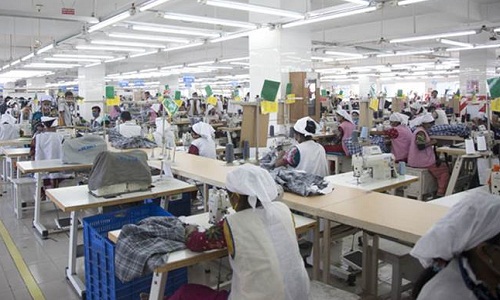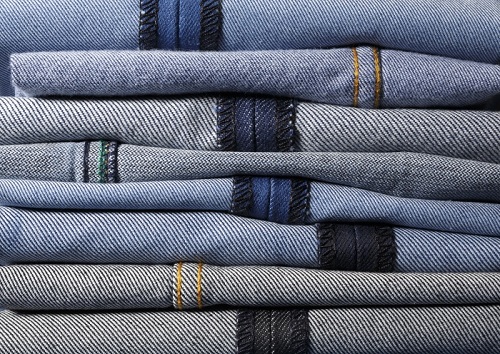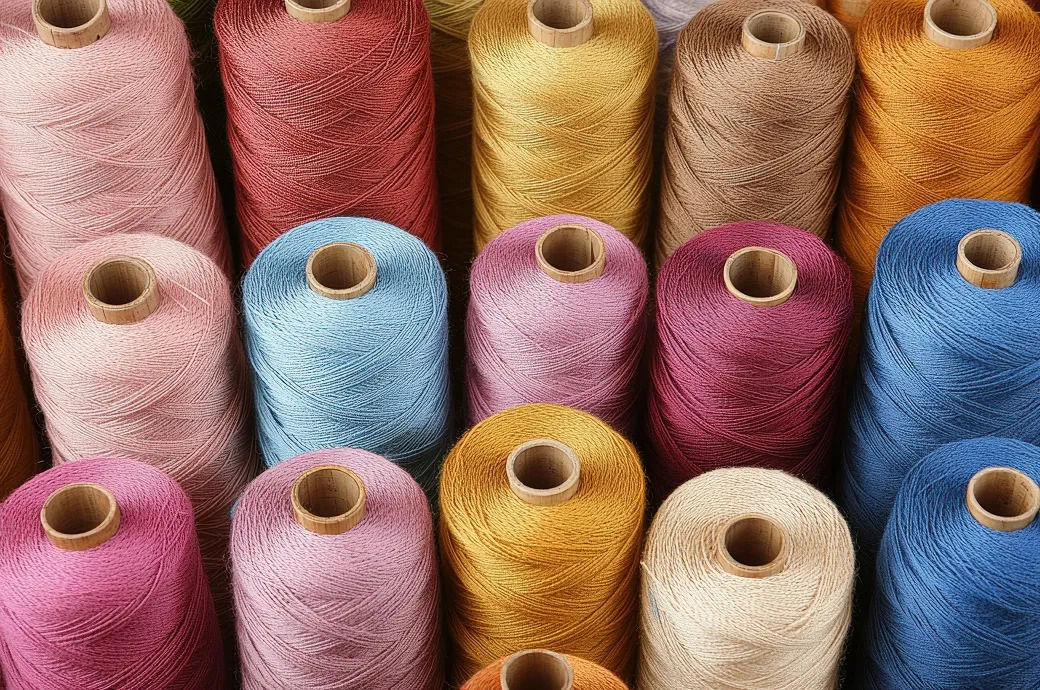FW
Garment and footwear factories in Cambodia are becoming compliant. More factories are holding regular evacuation drills, have unlocked emergency exits and can boast of no worker discrimination. The number of confirmed cases of child labor has also dropped from 65 in 2013 to 28 in 2014 and 16 in 2015.
One area of high non-compliance is the use of fixed-term contracts for workers, which weren’t being transferred to undetermined duration employment contracts after two years of employment. This is because it gives factories labor flexibility to get rid of workers or to downsize their staff. The high rates of non-compliance can be attributed to the low investment in the sector because investors aren’t exactly in Cambodia for development of its garment sector.
Certain such as light levels in factories, are judged not in compliance because the technical criteria are too high. While an increase of some compliance levels is a positive signal for the garment industry and its workers, there is also a need for further improvement in common areas of non-compliance.
The top 10 areas of non-compliance – those with upwards of 60 per cent of factories failing to meet the goals set – remain largely unchanged. Those include requirements such as the selection of shop stewards, a functioning HIV/AIDS committee and medical examinations for workers prior to hiring.
"The horrific slaughter of diners at a Dhaka cafe has triggered fears that surging Islamist violence may imperil the garment industry in Bangladesh, which built its economy on cheaply supplying fashion to the world’s big-name brands. Said Faruque Hassan, Senior Vice President of the Bangladesh Garment Manufacturers and Exporters Association (BGMEA), that this attack will turn away foreigners. BGMEA represents 4,500 factories in the country"

The horrific slaughter of diners at a Dhaka cafe has triggered fears that surging Islamist violence may imperil the garment industry in Bangladesh, which built its economy on cheaply supplying fashion to the world’s big-name brands. Said Faruque Hassan, Senior Vice President of the Bangladesh Garment Manufacturers and Exporters Association (BGMEA), that this attack will turn away foreigners. BGMEA represents 4,500 factories in the country. The impact of this attack will be very damaging for the industry and we are now extremely worried, added Hassan, whose Giant Group supplies clothes to retailers including Britain’s Marks & Spencer and Next.
From the frying pan into the fire

Bangladesh, the world’s second-biggest exporter of apparel after China, even before the cafe siege was reeling from a wave of Islamist-linked killings of religious minorities, liberal activists and foreigners, including an Italian aid worker last September. Now concern is mounting that the South Asian nation, wracked by political instability since independence in 1971, is sliding into deeper chaos, with under-pressure police arresting 11,000 people last month in a desperate crackdown.
Said Sarah Labowitz, Co-director at the NYU Stern Center for Business and Human Rights in New York, the hostage crisis in Dhaka is a terrible tragedy reflecting how security has deteriorated in the country. The violence presents a serious threat to the economy, Labowitz said. This kind of attack will surely keep (fashion) buyers away in the months leading up to the holiday shopping season.
Bangladesh has clocked growth of around six per cent nearly every year since the turn of the millennium, although a quarter of its 160 million people still live below the poverty line. This is largely due to the garment exports, the lifeblood of its economy, and accounting for more than 80 per cent of total outbound goods last year. Between them the nation’s clothing factories employ more than four million people; most of them impoverished rural women. Ulrica Bogh Lind, a spokeswoman for H&M, which sources many of its clothes from Bangladesh, told AFP the Swedish chain was deeply sad about the tragic incident. They are of course monitoring the situation in Dhaka closely.
Sign of financial malaise
Ahsan Mansur, a former representative for the IMF in Islamabad fears that the trade-dependent Bangladesh may suffer the same fate as its restive rival Pakistan. When extremist violence began to spread in Pakistan, he said, the first sign of financial malaise was expat families packing their bags, then trade and investment crumbled. The perception that Bangladesh is a potential terrorist hotspot can seriously hit our export potential and growth prospects. Yet plucky Bangladesh has ridden out numerous storms, seeing off threats from labour unrest, mass transport blockades and large-scale political paralysis - as well as workplace disasters.
According to industry figures, clothing exports swelled nearly 10 per cent in the year to June, to $27.3 billion. The Rana Plaza factory collapse that killed at least 1,138 workers in 2013 shocked the world, heaping opprobrium on Western retailers seen as exploiting impoverished workers. But the tragedy prompted retailers to act on appalling safety conditions in their factories, where fires and other accidents are frequent. The incident forced the brands to set up two global alliances to make workshops safer and cleaner - although it remains a work in progress.
Chief negotiators of 16 countries including those from India and China are expected to meet on July 18-19 in Jakarta to participate in the Regional Comprehensive Economic Partnership (RCEP) talks to discuss tariff-related issues in the goods sector. India will pitch for continuation of the three-tier system of tariff or tax elimination for member countries as a few countries favour only one tier, an official has reportedly said. The RCEP is a mega trade deal which aims to cover goods, services, investments, economic and technical cooperation, competition and intellectual property rights.
Some countries, including China, are pushing to increase the number of products that will attract zero duty. The meeting is crucial as members have to finalise the contours before the trade ministers meet in August. India may increase the number of products, but would not go for zero duty on those. It will propose to reduce taxes on those incremental goods.
India has decided to offer maximum access to its market for ASEAN countries with which it has a free trade agreement in place and has proposed to eliminate duties or tariffs on 80 per cent of items for the 10-nation bloc under this proposed pact. Similarly, for Japan and South Korea, the country has offered to open up 65 per cent of its product space. For Australia, New Zealand and China, Delhi has proposed to eliminate duties on only 42.5 per cent of products as India does not have any kind of FTA with them.
In the recently-concluded negotiations for the mega trade deal RCEP in Auckland, a few members raised concerns about the three-tier system. The next round of talks is scheduled to be held in Vietnam.
Ten brands have joined Bangladesh’s Partnership for Cleaner Textile (PaCT) industry program. Among these are Bestseller and Gap. Through this program these brands are working for sustainable industrial practices in their supplier factories in Bangladesh.
The PaCT program stands to support textile factories in Bangladesh by introducing resource efficiency and best practices and by promoting doing more with less—the most cost-effective way to reach resource sustainability. Major activities will include conducting basic cleaner production and deep dive assessments, and implementation assistance to identify opportunities to improve resource (water, energy, and chemical) efficiencies in the factories.
In addition the program will help the nominated factories increase efficiency in resource use and gain sustainability in their businesses. It will provide technical support to integrate a management diagnostic tool within the nominated factories’ processes and facilitate access to quality and reliable information on resource-efficient technologies and solution providers.
If Bangladesh is to reach its strategic target of $50 billion in readymade garment exports by 2021, this would result in an additional demand for water of over 3,400 billion liters by 2030, which is equivalent to the annual water needs of a population of approximately 75 million people. The implementation of cleaner production measures will positively impact the overall costs of water supply and pollution control.
Even as the sector's market size is expected to grow by 40 per cent to $142 billion in the next five years, the textile and apparel industry is likely to create only 29 lakh jobs much lesser than the government's target of one crore new jobs, says a report. “As the textile and apparel industry is moving towards automation, the industry is unlikely to create more jobs visa vis the growth in the industry. The expected job creation in the domestic textile and apparel sector would be 29 lakh in the next five years," the report says.
The report goes on to add that technological advancement leading to increased efficiency may reduce job opportunities. From a high of 40 workers being employed by the industry, it has now declined to 25 workers per Rs one crore. Spinning, autoconers and auto-splicers divisions have replaced a job of 20 workers by 2 workers. The inter-fiber shift moving from relatively labour intensive spun yarn to synthetic filament segment also leading to lower job creation, the report continues.
Further, the report points out that absence of FTAs with the EU, Australia and Canada, almost 55 lakh jobs are lost due added exports that would have been generated if the FTAs were signed. It has been reported that the study in mention was done to bring out the employment potential of the textile sector, especially in rural India by developing non-migratory models of manufacturing like 'hub & spoke' model being popularised in countries like Bangladesh, Cambodia and Myanmar.
Both the Central and State governments need to actively promote hub and spoke model in the sector to increase supply of suitable jobs to rural women and youth, the report suggests. The report says textile and apparel exports may post a CAGR of 9 per cent to touch $62 billion by 2021 from $40 billion in 2016. The domestic market is also expected to register CAGR of 5.2 per cent to $80 billion by 2021 from $62 billion in 2016.
Apparel Export Promotion Council (AEPC), the apparel industry body is expecting around Rs 5,000 crores fresh investments into the sector during the current fiscal which may create as many as two million jobs in India. Describing the Rs 6,000-crore textile booster package announced by the government late last month as a ‘game-changer,’ AEPC Chairman Ashok G Rajani said that based on initial feedback he has received, around Rs 5,000 crores may flow into the industry in fresh capex this fiscal year itself.
According to Rajani, this additional investment into the apparel sector, which has not seen any investments for years, alone can create as many as two million jobs this year. The impetus will be on the near-doubling of the capital subsidy to 25 per cent of one's investment. Responding to whether the industry will be able to meet the government's target of creating 10 million jobs and $30 billion in export earnings by 2020, Rajani said that without any doubt, it is very much doable.
Rajani, who runs a company, Flair Exports said his company will be setting up a new factory this year itself and is scouting for the right location. The factory will be in Navi Mumbai and he needs Rs 6-7 crore to open the new factory with 250 machines. Meanwhile, the Cabinet, on June 22, cleared Rs 6,000-crore incentive package for the textiles and apparel sector to create one crore new jobs over the next three years, and attract investments worth $11 billion and generating $30 billion in exports.

Invista’s Cordura fabric, known for its resistance to abrasions, tears and scuffs, is a primary ingredient in many high-performance gear and apparel products. Complemented by examples of cutting-edge fabrics, Cordura, in collaboration with some leading innovative denim mills, has come up with its latest denim trends for 2017.
This season is about getting back to basics, embracing simplicity and spirited off- the-grid adventures, according to Cordura.
Themes and more
Invista’s first theme, entitled ‘The Future is Real’, is exploring the implications of the modern chaotic lifestyle, tied to technology, and weighs them against the authenticity and craving for escape. A leading denim manufacturer, Artistic Milliners, keeps it real with its classical Cordura denim Magnum, Kingpin and Cobra styles – all of which are said to have the authentic look, feel, and comfort of traditional 100 per cent cotton denim, with built-in long-lasting durability.

The theme, ‘Luxury in Lifestyle’ is about today’s consumer and their personalised product requirements. This often means combining strong with soft, form with functionality and durability with delicacy. The company explains that luxury doesn’t have to be unobtainable and functional doesn’t have to be ordinary. Artistic Milliners features Cordura denim fabrics featuring 2 and 4-way stretch based on Lycra and Lycra T400 fiber technologies in its Cobra Black Series and Magnum poly stretch. Another highlight is the AMS 1110 A featuring Lycra DualFX fiber technology.
Another denim producer, Advance Denim features super stretch Cordura Denim fabrics QA136-11 and QA136- 12, both with Lycra dualFX fiber technology, which contain about 30 per cent stretch but have a high degree of dimensional stability so that jeans retain their shape and fit over time. Samtex features Cordura Denims with Cotton/Modal/Viscose for super softness combined with Invista T420 nylon 6,6 fiber for long-lasting performance.
Versatility
According to Invista, in a time when freedom and diversity allow us to be who we want be and live as we like, we demand the same versatility from our world, our clothes and our fabrics. New capabilities, like moisture-wicking, temperature control and quick-dry technology, are hidden in the science of fabric technology. To meet the demand of maximum functionality, Artistic Milliners features Cordura Denims with Lycra T400 fiber technology, designed to keep the wearer cool and dry. Advance Denim features Cordura Denims with a combination of Coolmax and Lycra fiber technologies for moisture management and stretch (QA159 F36-16). Finally, Samtex presents Cordura Denims that are designed to combine the softness of modal with the quick-drying benefits of polypropylene.
Fabric performance
Invista is one of the world’s largest integrated producers of chemical intermediates, polymers and fibers, with leading brands including Lycra, Coolmax, Cordura, Stainmaster and Antron. Cordura fabric, known for its resistance to abrasions, tears and scuffs, is a primary ingredient in many high-performance gear and apparel products ranging from luggage, upholstery and backpacks to footwear, military equipment, tactical wear, workwear and performance apparel. Cordura Denim fabric is an intimate blend of cotton and Invista’s T420 nylon 6,6 fiber. It aims to retain the authentic look and feel of cotton denim, but with added abrasion resistance and toughness.
In an atmosphere of great international participation, of research and quality expressed by all attending exhibitors, the curtains to the 79th edition of Pitti Filati was wrung down on July 1.According to a survey, the first attendance figures show a more than 4 per cent increase in buyers at the fair. This brings the total number of buyers attending the fair to 5,400 (5,200 a year ago). According to the organizers, they registered both an increase in Italian buyers (+5 per cent) and international ones (+3 per cent).
The best-performing foreign markets attending the fair were France (+14 per cent), Spain (+8 per cent), China (+30 per cent), Russia (+18 per cent) while the US, Japan, the Netherlands, South Korea and Sweden markets made a good showing. The fair registered a slight increase in the numbers of foreign buyers from of the UK too.
According to Pitti Filati CEO, Raffaello Napoleone there was a lot of attention from international markets and were in line with the results registered at Pitti Uomo and Pitti Bimbo despite a rather complex international situation. There was a positive feedback for the special initiatives at this edition viz: the fashion show of Sansovino 6 at the Teatro della Pergola and the contest ‘Feel the Yarn.’ The seventh edition of Feel The Yarn, the competition organized by Consorzio Promozione Filati (CPF) along with Pitti Immagine was dedicated to aspiring designers from 13 of the most prestigious schools of fashion and design in the world.
As the Turkish textile industry participates in international trade fairs and events and monitors fashion trends worldwide, the country can deliver latest trends to consumers. This has helped Turkey’s textile and apparel exports record $30 bn annually, of which $7.5 bn accounts for Merter, a District in Istanbul known for its ready-to- wear textiles. Data from the Merter Industrialists’ and Businessmen’s Association (MESIAD) chairman Yusuf Gecü, reveals all medium and large textile and apparel manufacturers in Turkey have a store or showroom in Merter. There are 10,000 stores in the region and the number of people directly employed in these stores has now touched 1,00,000.
As per latest statistics, the district exports textile and apparel products to 215 countries. Gecü says Merter welcomes 3,000 importers every day from 60 countries in the Middle East, Africa, the Turkic Republics, the Far East and especially from the US, Russia, Europe and the Gulf countries. Merter’s exports amount to 25 per cent of annual textile and apparel exports in the country.
Turkey’s average export value per kg is around $1.7 and this figure reached $15 in apparel and $5 in textile. Gecü says Turkey’s 2023 goal is to exceed $50 bn in exports and they target $15 bn of this figure from Merter alone. Turkey is among the few countries in terms of producing quality denim jeans and knitted products. Turkish producers are striving to become top brands as they are focusing on quality product with design. Turkish goods are seen worldwide as cheaper than Europe and much better in quality than China. Gencü says this perception was in the minds of consumers particularly in Russia, Turkic Republics, African, European, Middle Eastern and Gulf countries.
India’s coir exports during the last financial year recorded a 17 per cent increase in value, largely due to higher exports of coir pith. The volume of exports increased by 20 per cent. India is the largest exporter of coir products such as mats, matting and rugs in the world. Coir pith is the top performer in terms of volume with a share of 54 per cent. Other products like coir geo-textiles, handloom mattings, tufted mats, power loom mats and coir rugs and carpets also showed a rising trend in exports.
Exports of items like curled coir, rubberised coir, power loom mattings and handloom mattings declined during the period. The US tops the list of countries in value terms of exports with nearly 26 per cent of the total realisation, while China, with 36 per cent of volume share, tops in that category. The US, China, Netherlands and South Korea are the main buyers of coir products from India.
However, coir is witnessing stiff competition from other mechanised products like PVC tufted mats. Coir is a natural fiber. Kerala is the home of the Indian coir industry. India supplies over 60 per cent of the world supply of white coir fiber.












